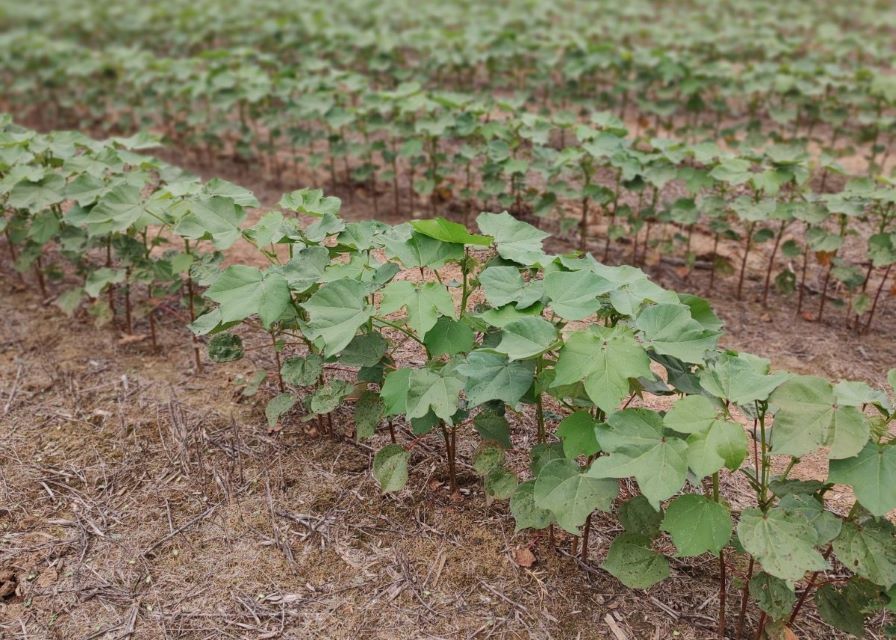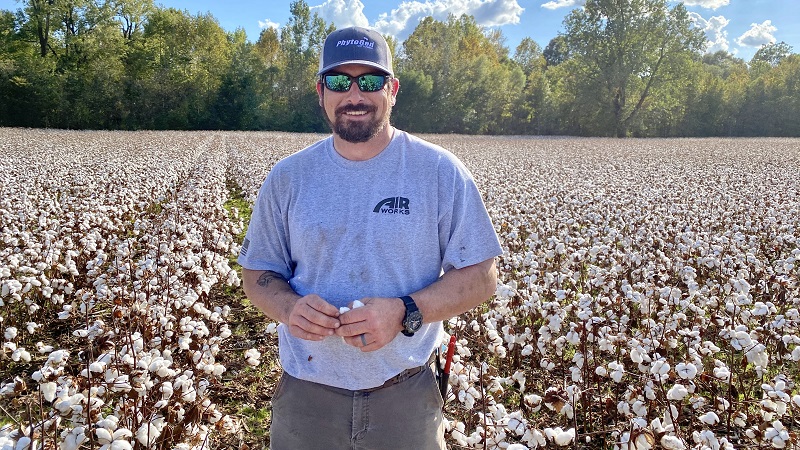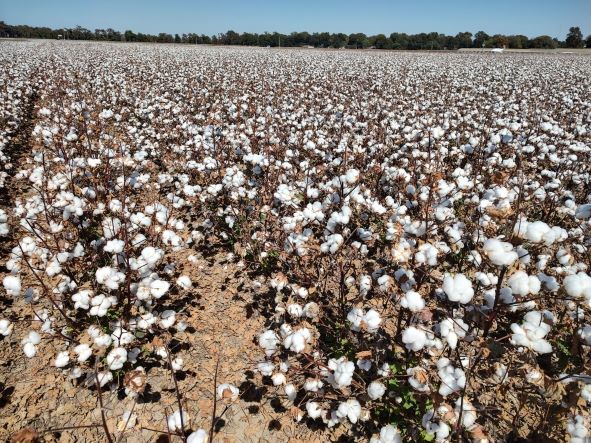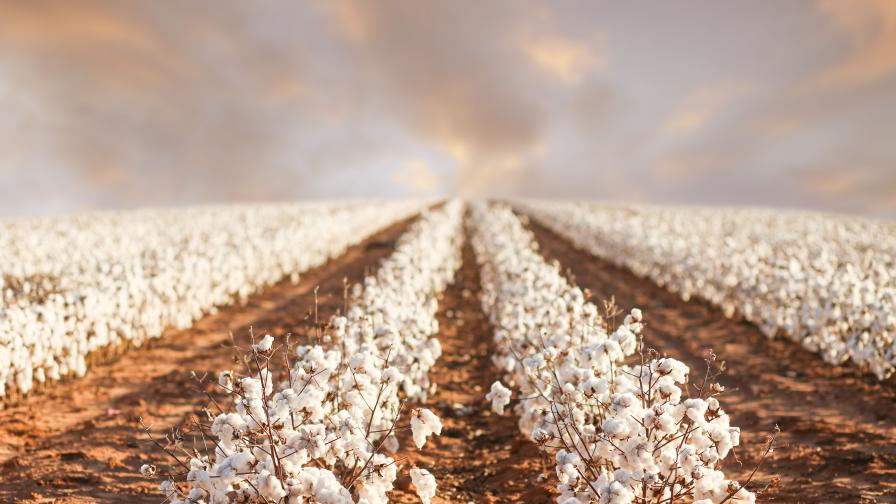Crop Scan Ag Report: Insect Issues Lingering
In late August, the cotton crop remains all over the board, ranging from late planted cotton working to catch up to turning the water off on older fields that are nearing cut out. Heavy plant bug pressure and whitefly infestations are causing problems in the lower Southeast, while growers still need to watch aphids, Lygus, and stink bugs in west Texas. There seems to be a pretty good crop out there, but it’s also the time of the season where growers are watching any additional input costs very carefully.
Here’s what our contributing consultants had to report.
Chad Harrell owns and operates Harrell Agronomic Services in Northeastern North Carolina.
We are still wet and have continued to get rain over the past two weeks. Most of our cotton is now at the 7th week of bloom. Insect pressure has remained steady over the past week, and our earliest planted cotton will be safe from insects in about another week.
We are already seeing some fields beginning to cut out due to nutrient loss from leaching rains. We do have some later cotton that will need protecting for a few more weeks.
Last week, we saw a lot of fruit shed following 4-5 days of rain and cloudy weather from a tropical storm. However, we still have a decent boll load and good yield potential if we can avoid any hard lock in September.
Wes Briggs consults on cotton, corn, peanuts, soybeans, and small grains for growers in Georgia, Alabama, and Florida.
We’re still in the heat of the battle with plant bugs. They’re as bad as I’ve ever seen in Georgia and in some of the fields where we check cotton in Alabama and Florida. We’re trying to manage plant bug sprays without blowing up whiteflies. We’re spraying a lot of cotton for plant bugs, and we’re spraying a lot of cotton on some farms for both plant bugs and whiteflies.
Whiteflies are like a grenade right now. They’re in every field just waiting for somebody to pull the pin. We’re trying to keep that from happening.
 Photo: Wes Briggs
Photo: Wes Briggs
Cotton is starting to open up. We’re cutting back on water on some farms, while we’re still wide open on other farms, trying to give 1½ to 2 inches a week. We’re still making cotton on a lot of farms. Right now, the cotton crop looks promising where it hasn’t run out of gas. We’ve had some big rains that have leached some fertilizer. The fields that have good height control management look pretty good right now. We’re just getting to the point where we can tell what our top crop looks like and should have a good feel for our older cotton in the next 7-10 days.
One thing we’re also doing this time of year is evaluating varieties for things like fruit retention, PGR management, and how they hold up under nematode pressure and heat. We need varieties that we really need to stay after. For us, it seems like the more aggressive varieties can better handle our stress environment.
We’ve seen some target spot, stemphylium, and areolate mildew, but none are running rampant. To date, very little fungicide has gone out due to the price of cotton. Everybody’s watching every dollar they spend right now.
Overall, I feel pretty good about our cotton. The potential for us to have good cotton crop is still there.
Tucker Miller is a Mississippi-based independent private consultant for cotton, soybeans, corn, peanuts, rice, and vegetables.
Cotton in our area is rapidly maturing. The hot, dry weather has made the cotton bloom out the top. We irrigated the last time on the late cotton and also made our last insect applications this past week. I still think we have a good crop overall.
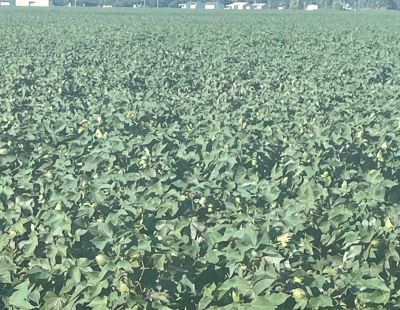 Photo: Tucker Miller
Photo: Tucker Miller
Cotton farmers are rolling up poly pipe, smoothing turn roads, and mowing weeds on the ends. It looks like we are about two weeks away from defoliation on the early planted cotton .
We are well into corn harvest, and yields are good. Reports are around 220 to 230 bushels per acre.
Dryland soybeans have been desiccated and harvested with very poor yields. We will start desiccating irrigated beans this week, and yields should improve.
Hope everyone has a good harvest.
Mark Nemec is an independent agricultural consultant for cotton, wheat, grain sorghum and corn in the Blacklands and Brazos River Bottom area of Central Texas.
We are hopefully on the home stretch with this cotton crop in Central Texas. Hot, dry weather for the last two weeks has really pushed our crop along nicely.
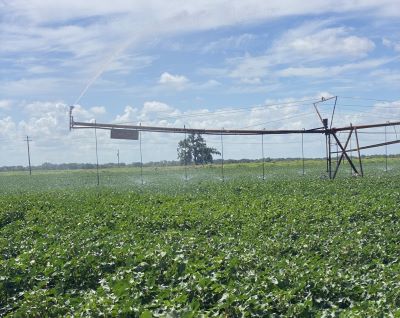 Photo: Mark Nemec
Photo: Mark Nemec
Dryland fields are popping open rapidly and should be defoliated pretty soon. Irrigated cotton has loaded up and started to reach cutout. Some last minute PGRs have gone out, and irrigation is starting to wrap up as well.
After such a cool and extremely wet start to this year, the crop has surprised a lot of us in how it has turned around.
Most fields are getting past any insect problems. The later young cotton fields are still susceptible to some pests. Stinkbugs are being drawn to those green fields like steel to a magnet, especially near any grain that was recently harvested.
Kerry Siders is Texas A&M AgriLife Extension Agent-IPM for Hockley, Cochran, and Lamb Counties.
Not much has changed over the last couple of weeks in cotton other than the physiological state of the cotton itself. We have moved from 5 nodes above white flower (NAWF) on Aug. 5 to less than 2 NAWF as I write this article. The +95-degree temperatures have made this happen. We have consistently been in the 22-heat unit/day (DD60) almost all of the month of August and a good part of July.
When it comes to insect pests though, we can’t quite stick a fork in it yet. I am still checking fields with cotton aphids and am on the alert for bollworms, Lygus, and stink bugs. This is especially true in cotton which has late growth, non-Bt cotton, or cotton that may have excessive or late applications of nitrogen. Most cotton will need to be monitored for at least another 10 days – maybe through the first week in September for later cotton.
Cotton is generally safe from most pests when approximately 400 heat units (about 20 days) past the 5 nodes above white flower have accumulated. Cotton aphids, Lygus and stink bugs would be insects which I never completely turn my back on up through boll opening.
Cotton irrigation is still very critical with very limited rain showers. Cotton still needs from 0.15” to 0.25” per day. This is down from near 0.30” per day at the peak just a few weeks ago. Evapotranspiration will decrease as temperatures moderate and day length decreases.
Weeds continue to be a concern for some. Be careful in your enthusiasm to kill these weeds. First ask if these weeds are just cosmetic at this point or will their seed production haunt you in the future (i.e., morningglory, pigweed) or cause you harvest problems.
I am seeing many fields with large pigweed being hoed. I applaud your effort, albeit costly. But most likely those weeds represent a real hurdle to harvest. However, control may not be necessary for young flushes of weeds. In some situations, you might just save money for a good harvest aid program and be prepared to do a much better job next year with residual herbicides.






